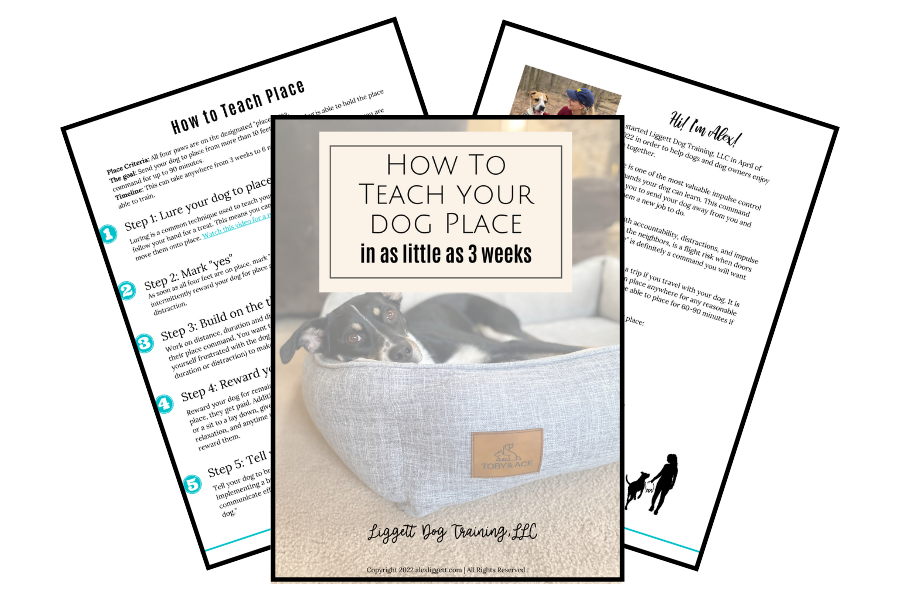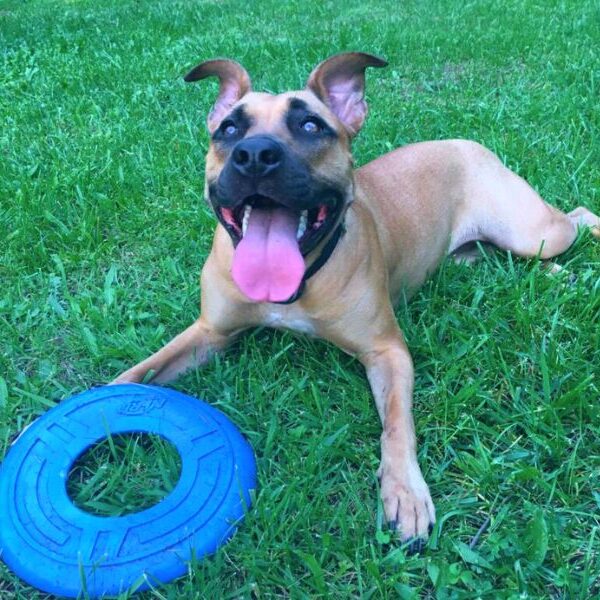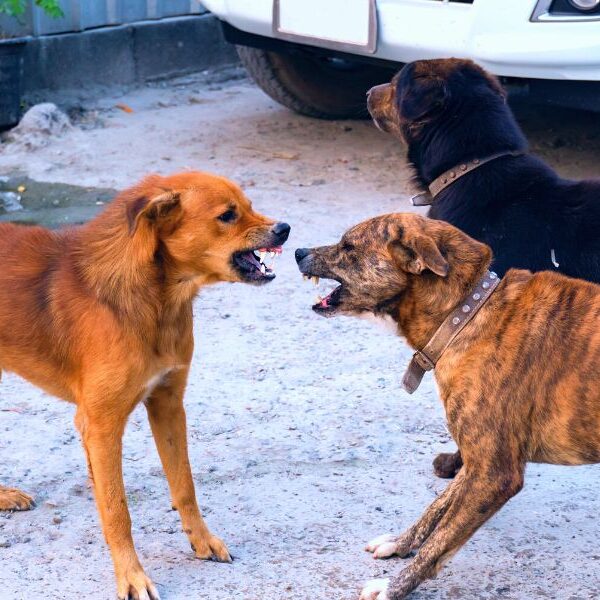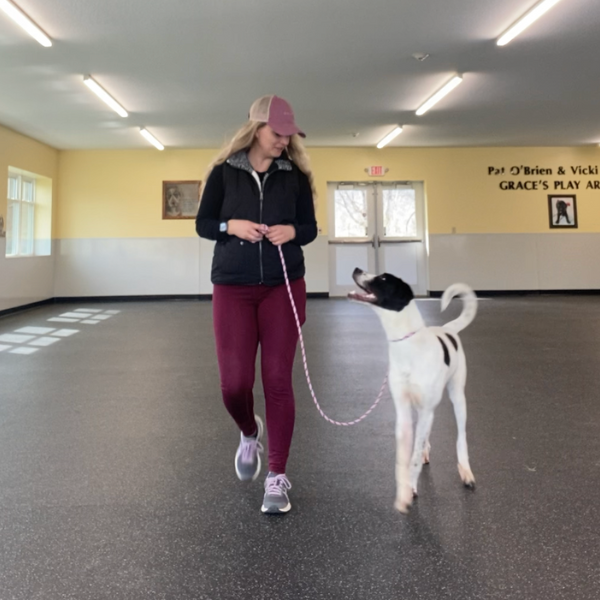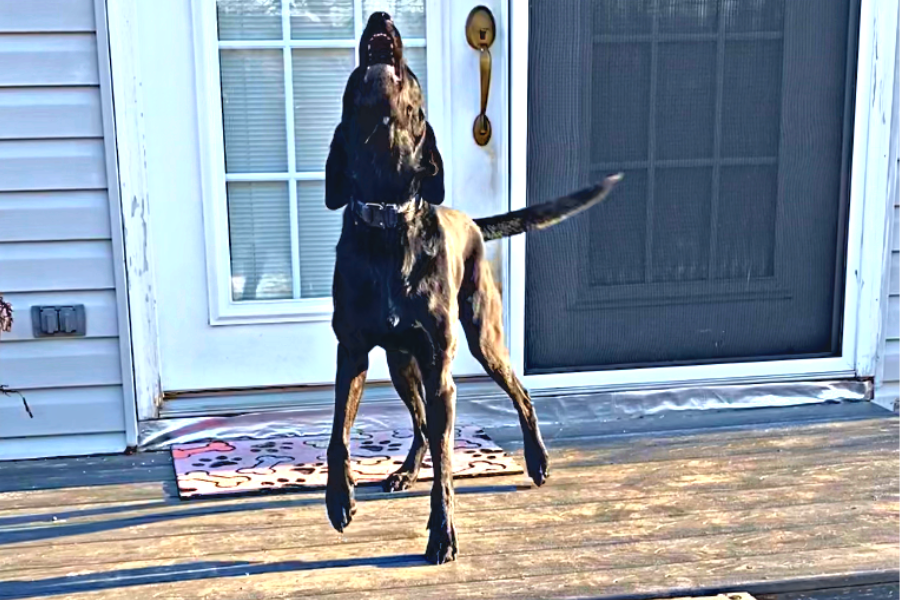
Help, my dog won't stop barking! What can I do?
While your dog's bark can be annoying, distracting or alarming, the good news is that every dog barks for a reason. This means, if you can identify the reason, you can minimize or stop the barking.
A dog's bark is one of their primary ways to communicate, especially with humans.
This post will help you determine which of the five kinds of barking your dog is doing. Once you understand what type of bark, you can begin to implement strategies in order to decrease or eliminate the barking.
My dog won't stop barking

My Dog Barks at Everything That Passes By
1. Alert Barking
Alert barking is one of the most common types barking. One of the reasons we brought dogs into our homes and domesticated them was to have a form of protection.
Related: Learn about online dog training
An alert bark is part of a dog's natural instinct to alert their owner of a potential threat, but also to scare off anything unfamiliar. This is especially true for guard dog breeds like German Shepherds, Rottweilers, and terriers.
In addition to protection, barking at people and dogs passing by can turn into a learned habit because it is usually reinforced. Consider this sequence of events:
Passerby approaches, dog barks, passerby leaves, dog feels accomplished that they neutralized the threat by scarring off the person/dog/UPS guy/Amazon prime truck with their barking.
How to Know if Your Dog is Alert Barking
- Your dog barks at people, dogs or cars/trucks passing by
- Your dog barks at a doorbell, knocking or when a person comes in.
A dog that alert barks likely has some kind of protective instinct. So, the easiest way to stop the alert barking is to let the dog know that they've been heard and you have control of the situation.
This is where commands like "Leave it" "Place" and "Break" will be helpful.
Related: Place Dog Command | The Most Underrated, Undertaught Obedience Command
The best way to train this with a dog is to consider the metaphor of employees in an office. Think of your dogs as receptionists in an office. When someone comes in to talk to the boss, the receptionist goes to tell the boss there's someone here to see them. The boss then says, "okay, I got it. Thank you!".
Once the boss communicates that he has control of the situation the receptionist goes back to work doing receptionist things.
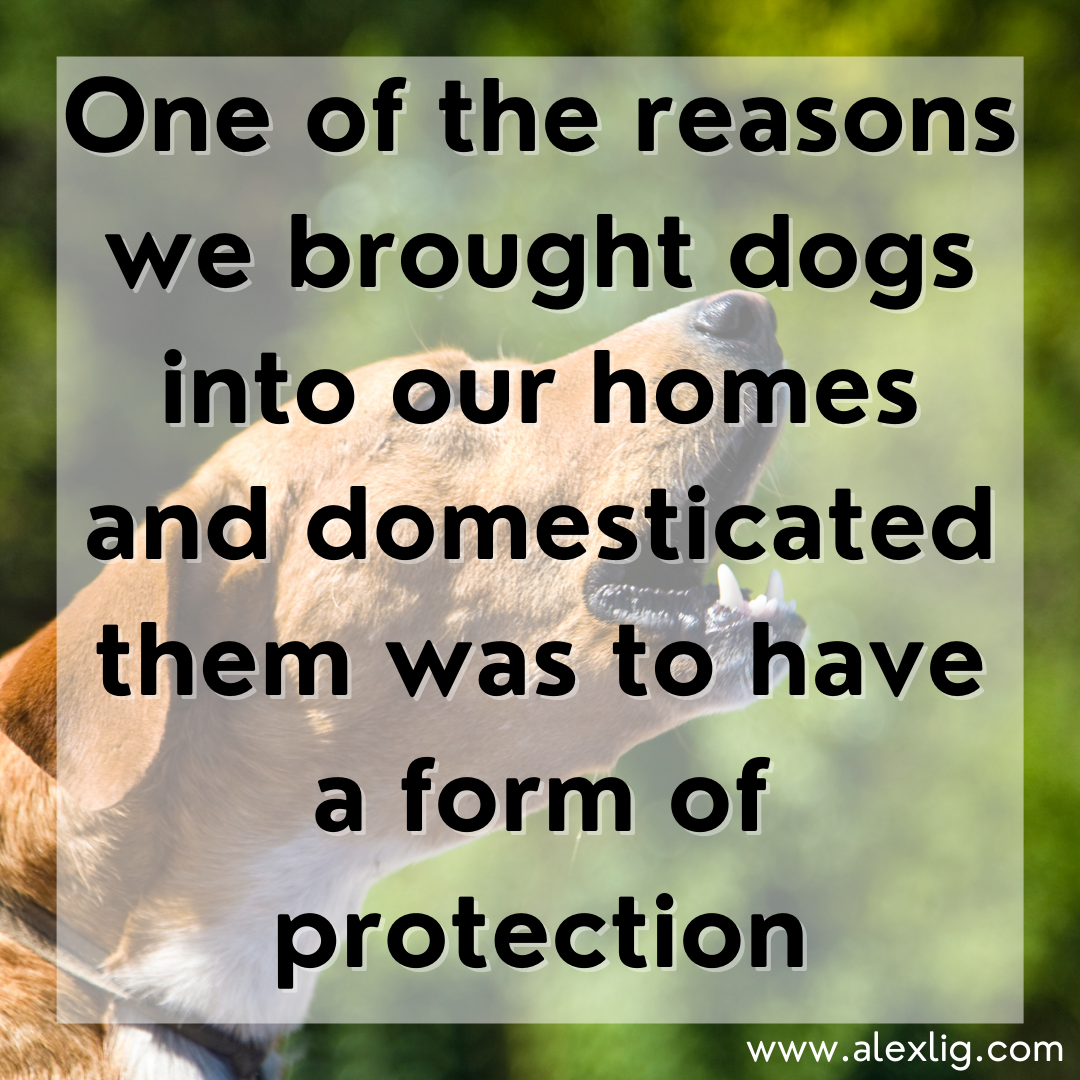
How to Fix Alert Barking:
- Thank your dog for doing their part in keeping the house safe. Keep a positive tone. "Thank you, Buddy. I've got it now."
- Tell the dog to "Leave it" or "Place" to establish that you have control over the situation and they should be responsible to doing something else.
- If your dog won't leave it or place under these circumstances, practice under less exciting conditions and work your way up to more distracting scenarios.
- Offer a game of tug of war or a treat when your dog does leave it or goes to place in a timely manner.
- Ask a friend or family member to help practice the routine of "leave it" and "place" by acting as the stranger passing by.
- Give your dog more exercise (a sleeping dog is not as likely to bark).
How to Stop Dog Barking When Left Alone
2. Separation Barking
A dog that barks when you leave or come back into the house is likely trying to communicate their discomfort with the distance between you and them.
This is often a learned behavior and not true separation anxiety. If your dog is hurting themselves (breaking nails, chewing on bars/walls/doors, breaking teeth or trying to jump out of confinement, please seek the help of a reputable trainer to help with separation anxiety.)
Related: How to Get My Puppy to Stop Barking
Remember: barking is a form of communication. If the dog is barking when you let them out of the crate, then the dog has been rewarded for their barking behavior and is more likely to do this again in the future.
How to Stop a Dog Barking When You Leave
- Practice leaving. Get up and put your coat on then sit down and watch tv. Carry your keys around and put your shoes on but then sit and work at your desk. Desensitizing the idea of leaving will help minimize the trigger of being left along for your dog.
- Practice leaving your dog alone under their threshold. If your dog barks after you've put them in the crate and closed the front door, then practice putting your dog in the crate opening the front door but don't leave. Come back and give your dog a treat then close the door and stay on the same side. This type of practice involves building duration and distance and you'll stay under the threshold of where your dog is comfortable.
- Play a soothing Dog Separation Anxiety Playlist on Spotify or search for a long playlist on youtube.
- Give your dog something to do. Associate you being gone with a high value treat that they only get when you're not around: like a frozen PB Kong or Busy Buddy Bristle Bone.
- Wait it out. Put your dog in the crate while your home. Once they've settled in and calmed themselves down, then allow them to come out. This teaches them that relaxing will get them what they want.
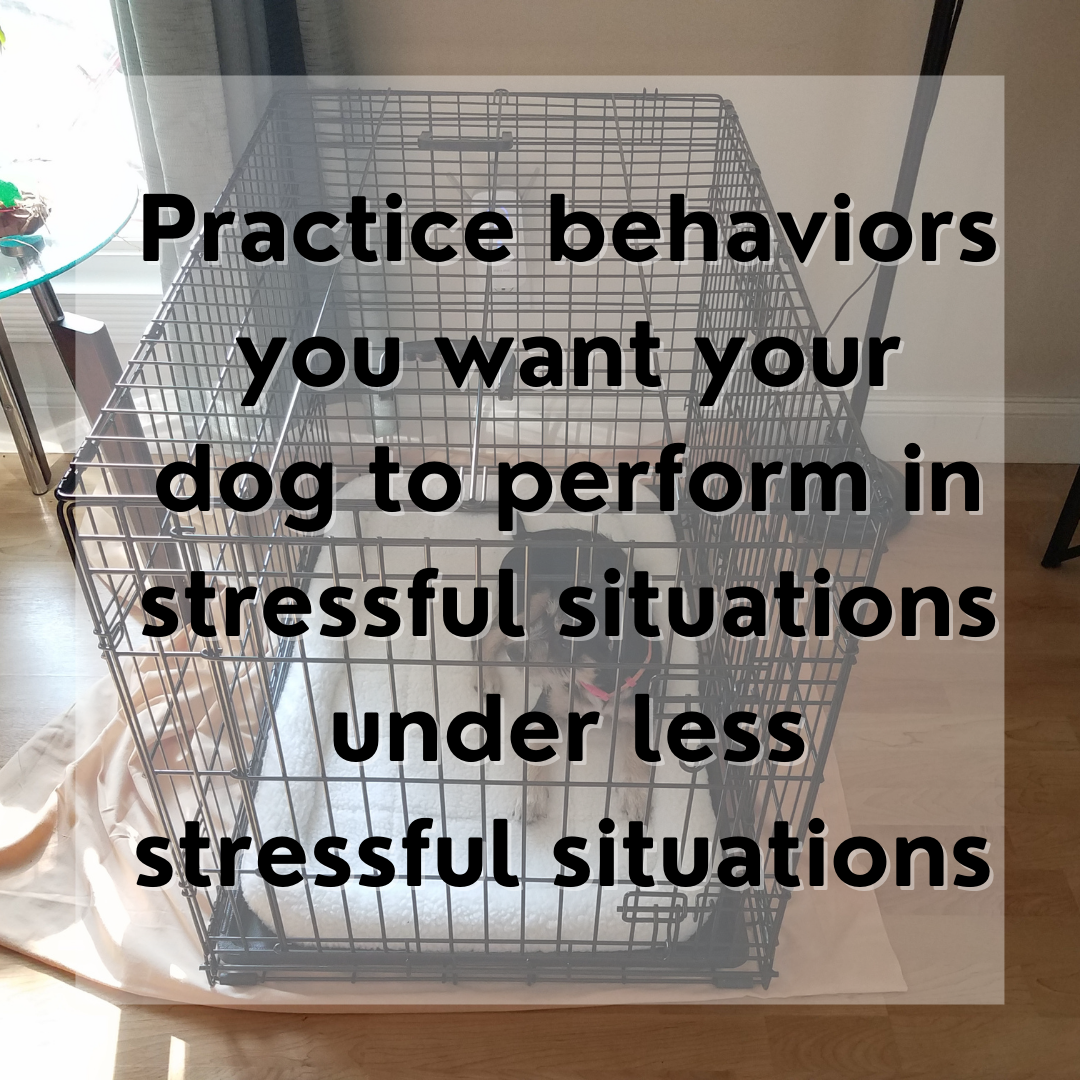
My Dog Barks at Me When I Sit on the Couch
3. Demand Barking
Barking is a way some dogs ask for food, a walk, to go outside, playtime or other fun activities. However, some dogs can be come obsessed, demanding, entitled or addicted to having things their way.
If your dog barks at you after all of their food and potty needs have been met, this can be a form of demand barking.
It is normal to have the ability to tell your dog to go lie down, leave it, or some other form of verbal correction. If your verbal correction only excites the dog and makes the problem worse, it's probably because your dog does not respect you as a leader.
In the case a correction excites your dog, it's recommended to seek help from a professional dog trainer because the entire relationship probably needs to be restructured.
How to Stop a Dog From Barking When They Want to Play
- Stop doing the thing the dog is demanding. This could mean putting a toy out of site, or changing up the food routine.
- Keep the furniture and bed off limits so you can reestablish your position as a leader and set spatial boundaries between you and your dog.
- Change the routine. Start acknowledging your dog positively when they are being quiet or exhibiting behavior you do want and ignore the behavior you don't want or leave the room.
- Exercise your dog.
- Teach a Place command
4. Excitement or Overstimulation
This is a tricky one to balance, because part of being a dog is being excited for anything and everything! There is a time and place for excitement. The most important thing to pay attention to when a dog is excited is your own energy.
When a dog is excited and you need them to calm down there are a few tricks to use:
- Calm your own energy. Use a firm, calm tone to say "that's enough"
- Use the "place" command and release your dog when they have settled their energy. You can also start teaching a behavioral down, but don't start teaching the dog this skill when the dog is barking.
- If your dog is food motivated, you can throw treats on the floor to help pull energy downward and redirect while you settle the activity in the house. Hint: This is not a long term fix, and will likely encourage more barking in the future.
- Take deep breaths and slow your movement down.
Related: Petsite Treadmill Review
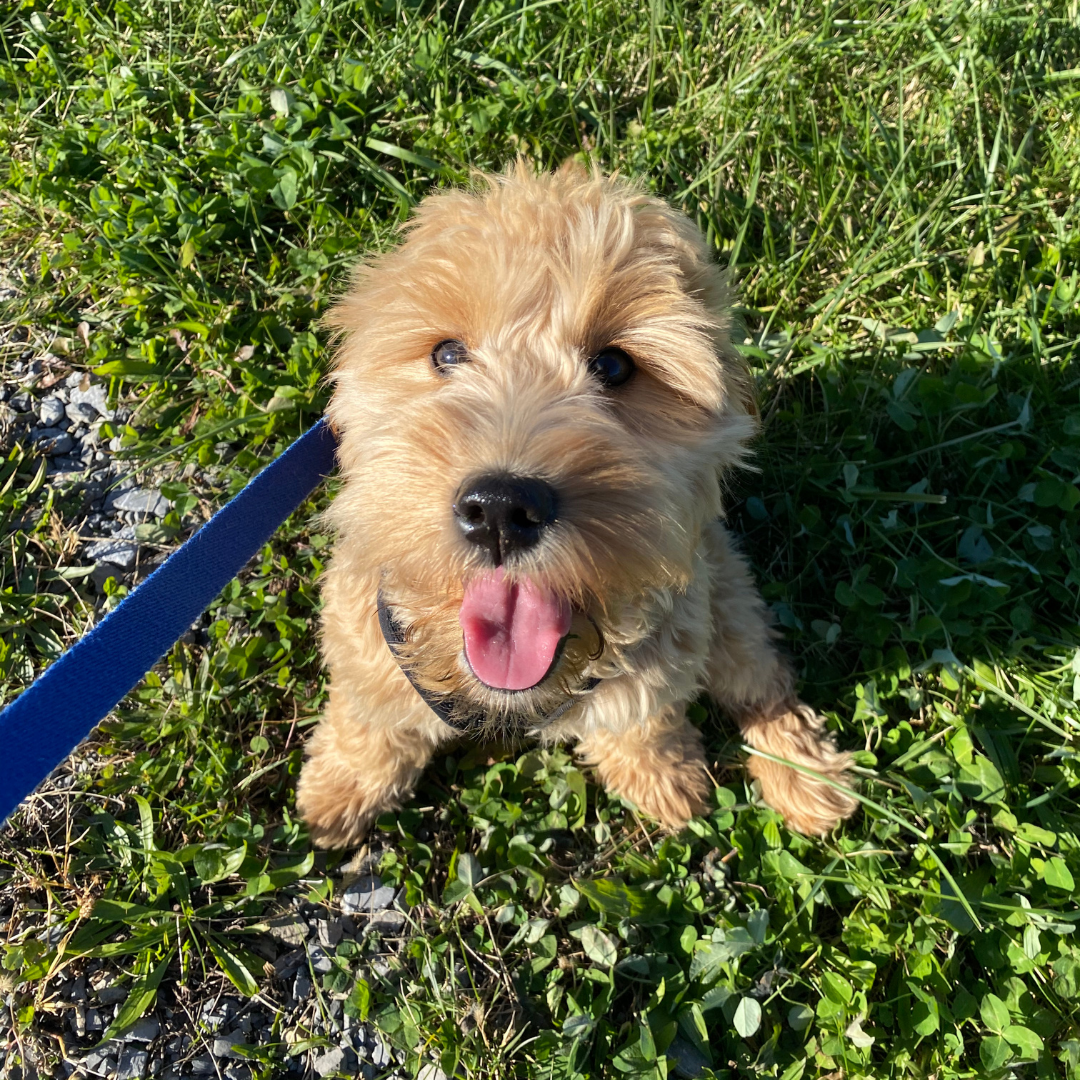
My Dog Won't Stop Barking at Night
5. Symptom of Cognitive Dysfunction
If your dogs barking hasn't fit any of these descriptions, and the barking seems to be indirect or perhaps towards inanimate objects, it's possibly a symptom of dementia.
This is especially true for older dogs who are loosing their site or hearing. Similar to sundowner's, a dog with dementia will likely bark more at night, but barking is not limited to night time.
The best thing you can do is consult your veterinarian for this behavior.
My Dog Wont Stop Barking at Other Dogs
6. Fear
A dog that barks out of fear is most likely feeling threatened one way or another. This is the kind of barking that should be handled by a dog training professional who has had success with fearful and/or aggressive dogs.
Remember, barking is a form of communication and fearful barking can mean, "I am scared, don't come any closer or I will bite".
Fear barking could also accompany alert barking, as the dog might be fearful that a person could be entering the house and is trying to appear scary to avoid confrontation.
If your dog is doing this, it is best to remove them from the situation or create more distance so the dog feels more comfortable and seek professional help.
Fear barking can be difficult to manage directly, and can be resolved through confidence building activities and leadership skills on the handler's end. This is because you are dealing with an emotion rather than a behavior.
If you ever have any concerns about your dog's behavior it is best to consult with a dog training professional.
This post was all about my dog wont stop barking.

